
ARTHUR MELVILLE: ADVENTURES IN COLOUR
—REVIEWED BY RHYS FULLERTON
Arthur Melville lived an adventurous life. Not many artists could claim to have been twice attacked by bandits, robbed and left for dead or arrested on suspicion of espionage. It sounds more like the synopsis of an Indiana Jones film.
Melville’s travels were often perilous but they produced some wonderful results and shaped his career. He managed to capture unknown territories in the late 1880s with an exquisite eye for detail and with the use of beautiful colour.
He was born in 1855 and was brought up in East Lothian. At 13, while working as a grocer’s assistant, he started commuting to Edinburgh for drawing lessons.
In 1878, his painting 'A Cabbage Garden' was exhibited at the Royal Academy of London, and after that he would set off for Paris, which was the beginning of his adventures.
It’s curious to compare 'A Cabbage Garden' with the works painted during his travels to Africa and the Middle East. It’s a lovely painting but it seems very traditional and very set in that time and place. When you compare this to his later works, you have to wonder how he got from a kailyard to the great bazaars of Cairo.
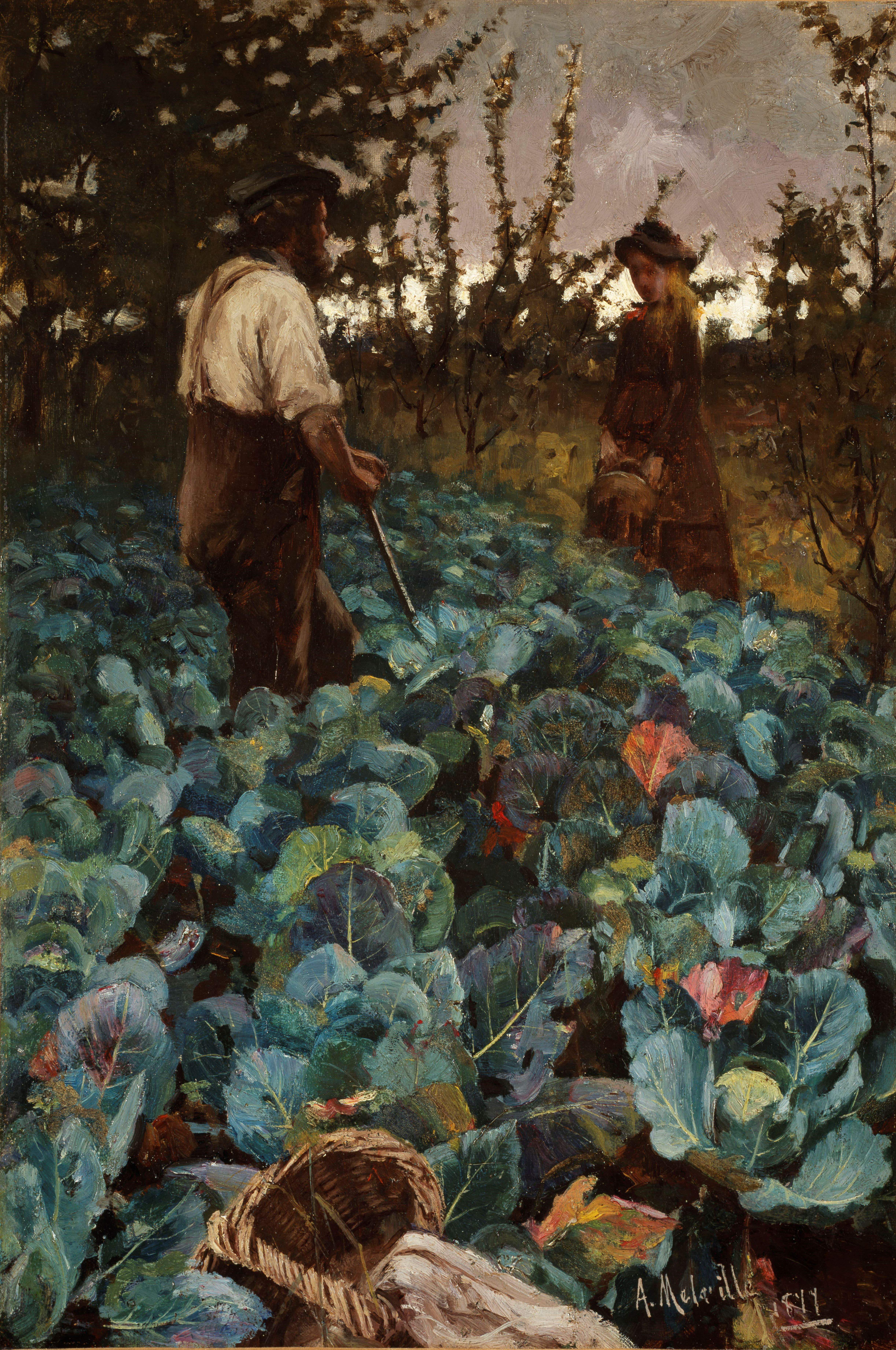
Melville seems to have travelled everywhere, including Europe, where he produced some fantastic works such as 'The Music Boat, Venice' from Italy (detail, top-right) and 'The Little Bullfight "Bravo Toro"' (below). But for me, the works created when he went further afield are much more interesting.

Occasionally it seems as if Melville has wandered into a scenario where he shouldn’t have been. See 'Awaiting an Audience with the Pasha', 'Arabs Returning from a Raid' and 'The Procession', for example.
'Awaiting an Audience with the Pasha' is really remarkable for its detail and in the scene that it’s depicting. Just look at the carpet! I can’t help but wonder what the subjects of the painting would have thought of Melville sketching from the sidelines.

In 'The Procession', Melville’s use of light and shadow is superb, and he brings the street scene to life just by the shadows on the wall.
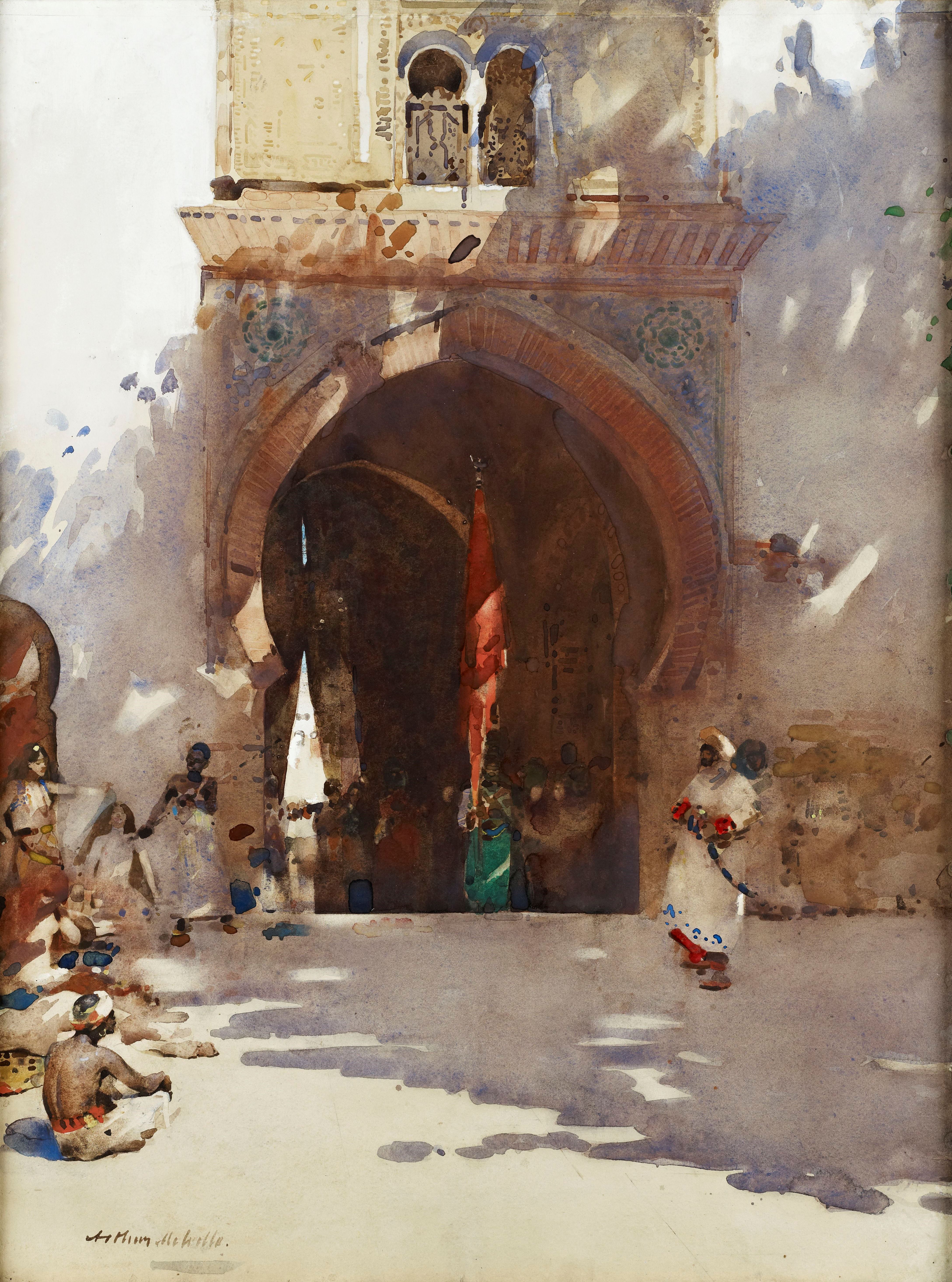
In 'Arabs Returning From a Raid', dusk approaches and the city is shrouded in shadow. You can see the raiders leaving behind the light and entering the darkness, and the red flag stands out above all else. Do the colour and the shadows represent the acts they have performed or is this just a coincidence?
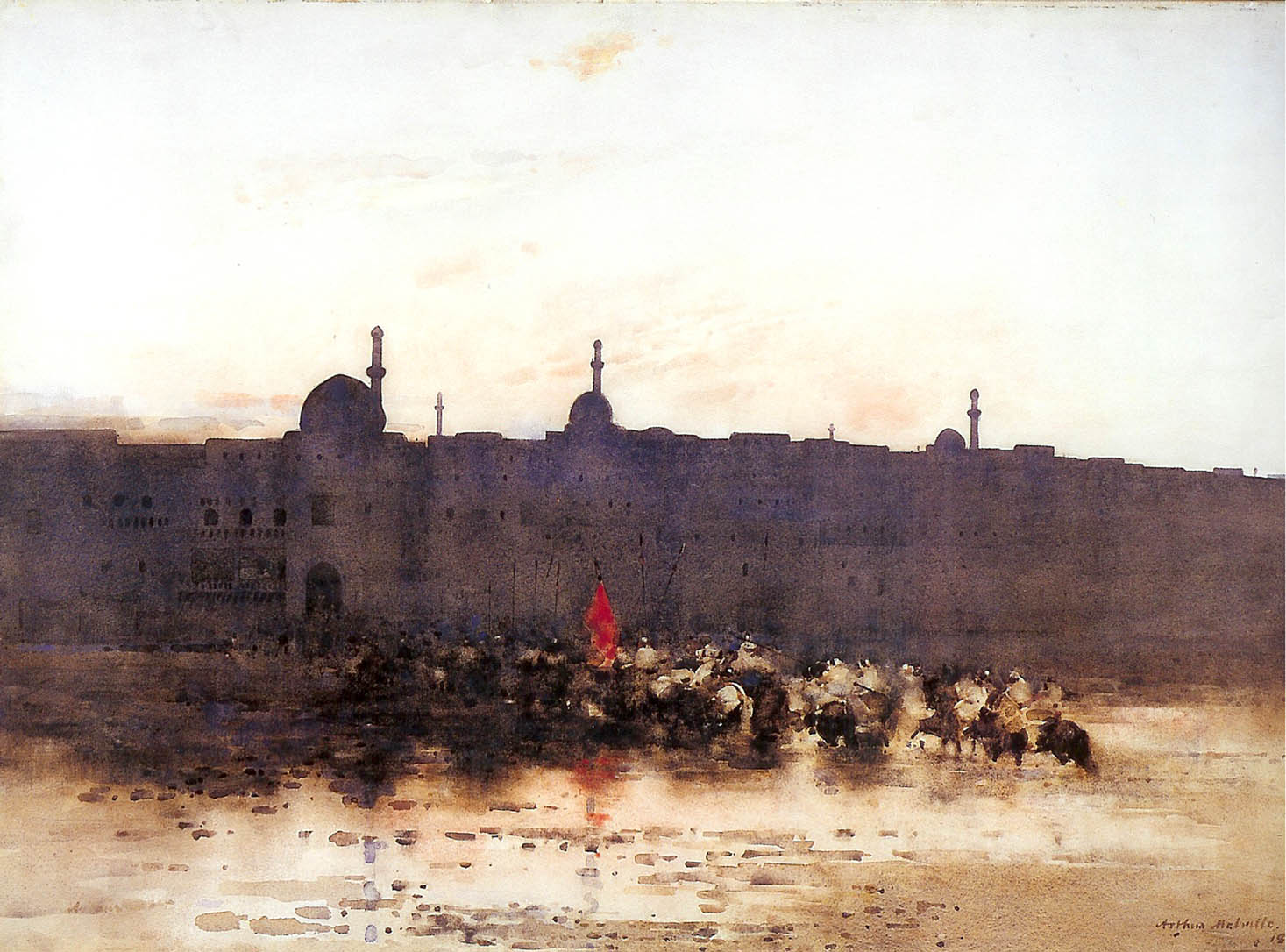
'The North Gate, Baghdad', Tangier and 'Pearl Fisheries' are all studies witnessing the daily day-to-day activities of these places, and they must have been eye-openers when exhibited back home.
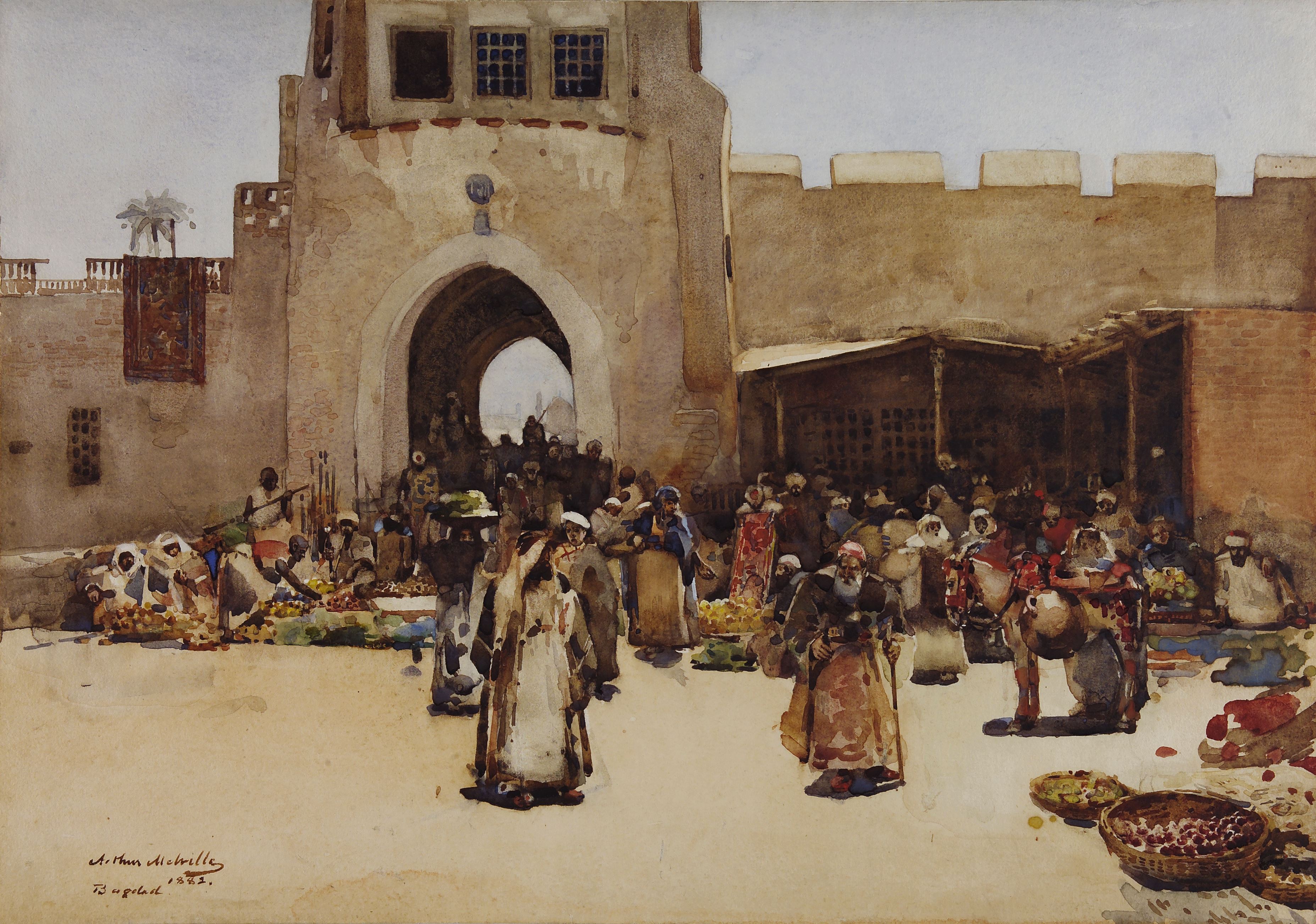

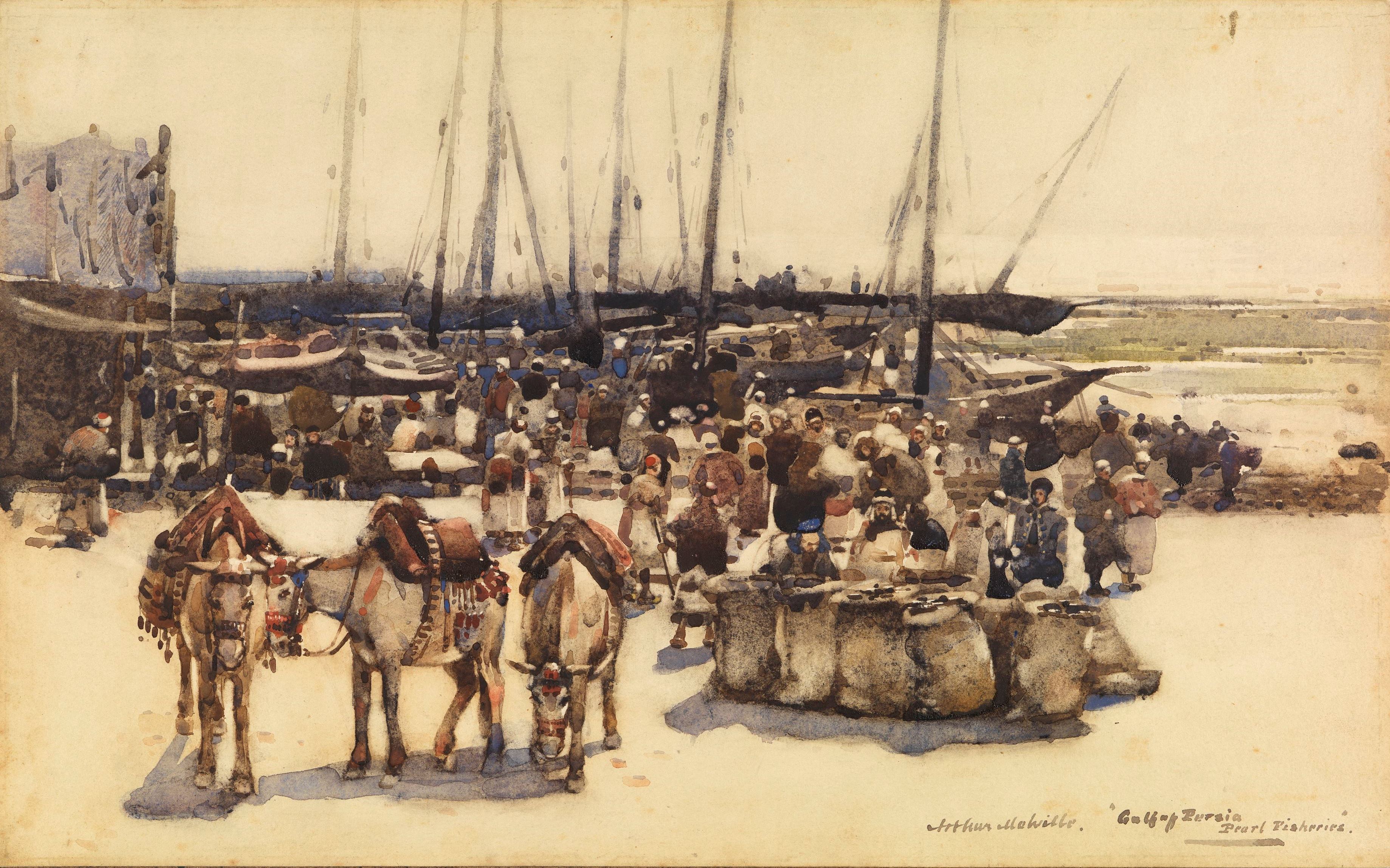
'The Sapphire Sea' is one of the most inviting and striking paintings on display. Its perfect composition and colour beautifully capture this tranquil location and make it irresistible and incredibly tempting.
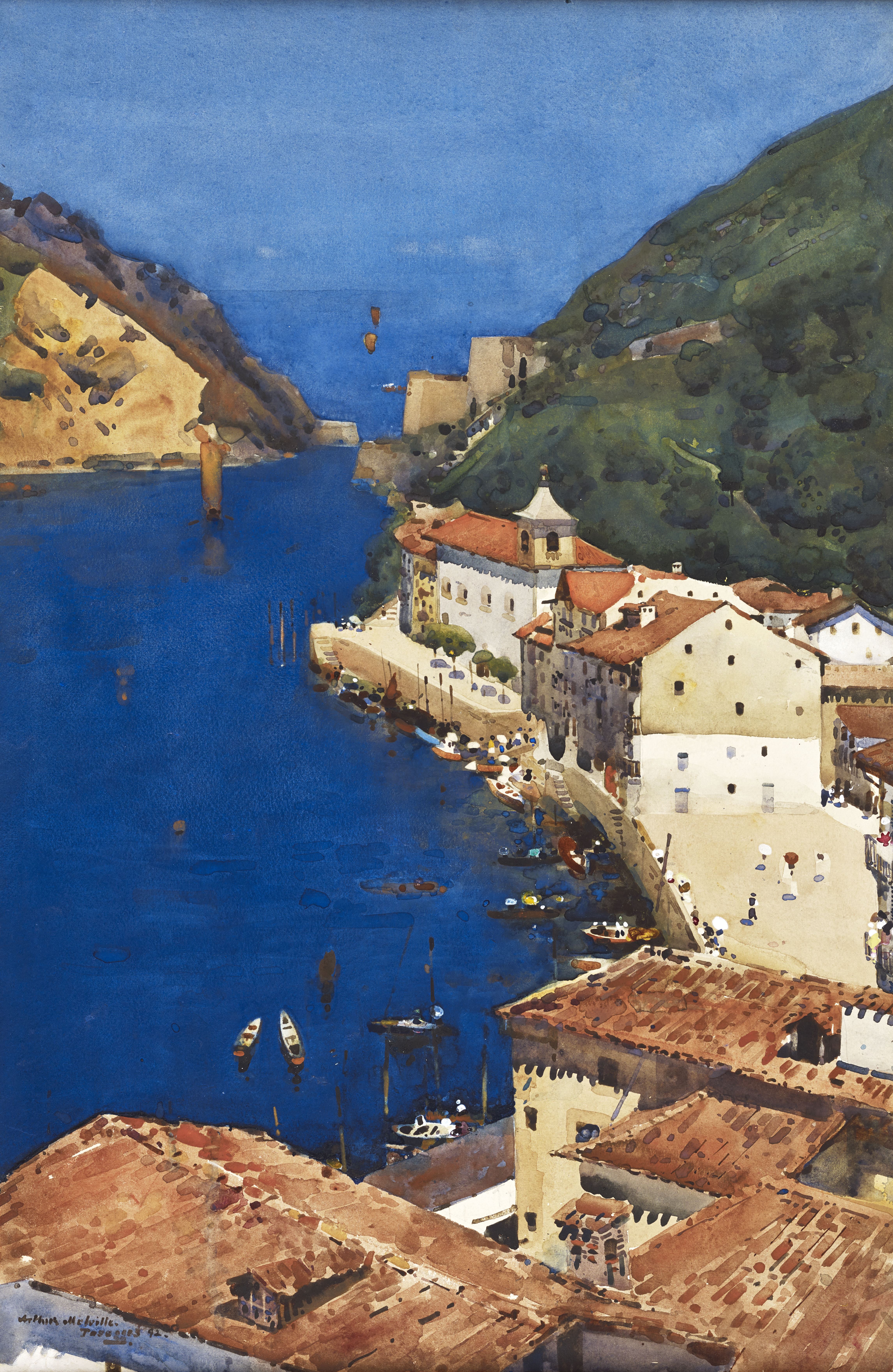
Away from the exotic travels, Melville painted only a few floral still lifes but I wish he had done more. 'Scarlet Poppies' is extremely expressive and dramatic. He scatters the poppies on a table rather than sticking them in a vase, and the paint is thick and the layers seem purposeful.
Arthur Melville died from typhoid in August 1904, at the age of 47. It’s remarkable to think of how much he did in such a short space of time. He was radical and exciting, and overall I found this exhibition enlightening and fascinating. It is full of life, adventure and incredible detail. His work and his life were a real adventure in colour.
Arthur Melville: Adventures in Colour continues at the Scottish National Gallery (The Mound) until 17 January 2016. Admission £9/£7.
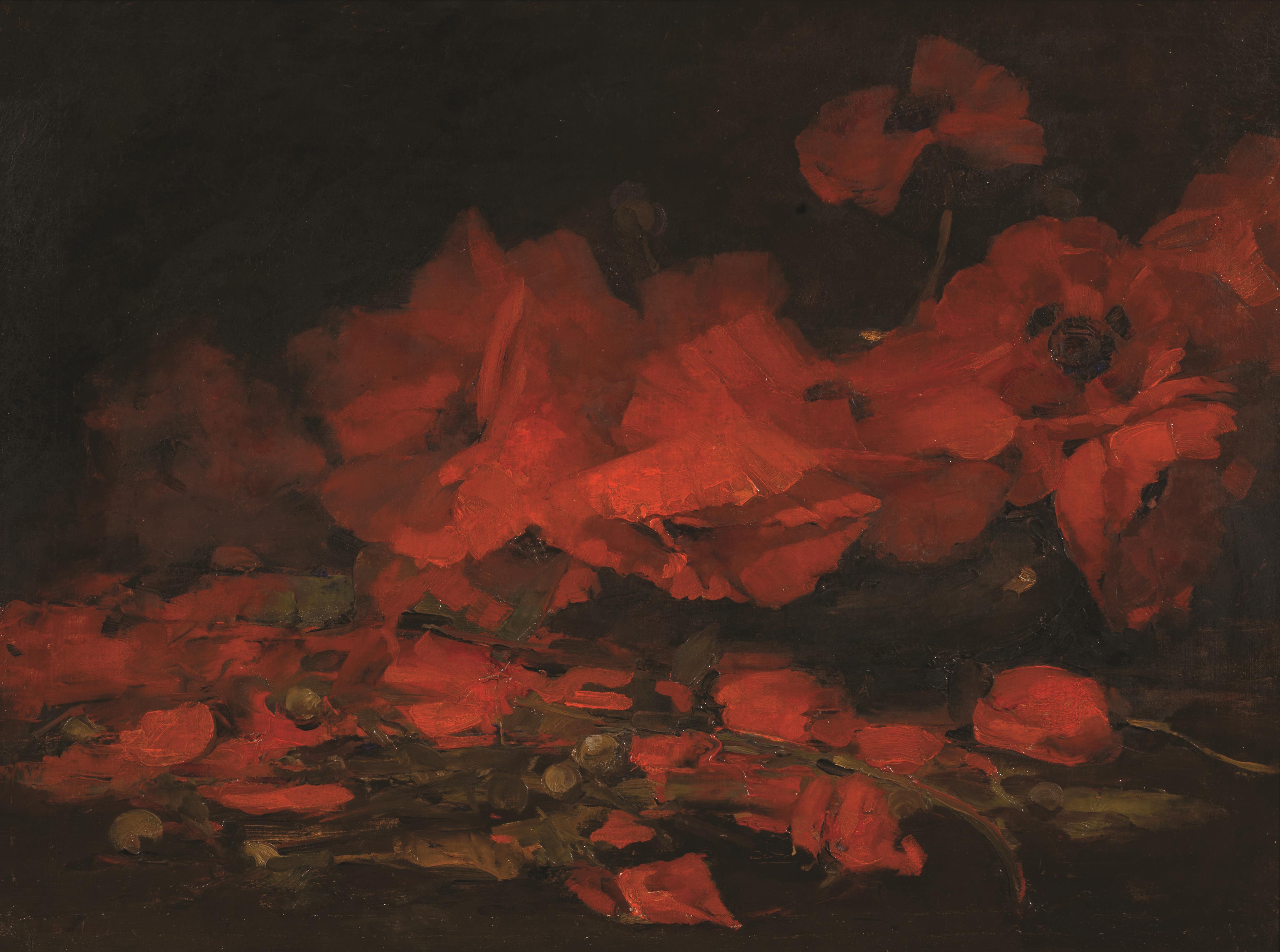
Image credits, top to bottom. (1) The Music Boat, Venice, watercolour and pastel on board, 61 x 86.4 cm (lent by Glasgow Life [Glasgow Museums] on behalf of Glasgow City Council: from the Burrell Collection), photo © Glasgow Life. (2) ‘A Cabbage Garden’, 1877, oil on canvas, 45.5 x 30.5 cm (collection: Scottish National Gallery, purchased with the assistance of the Art Fund, 2007), photo Antonia Reeve, photo © National Galleries of Scotland. (3) ‘The Little Bullfight, “Bravo Toro”’, watercolour and bodycolour with scraping out on paper, 55.9 x 77.5 cm (collection: Victoria and Albert Museum, London). (4) ‘Awaiting an Audience with the Pasha’, 1887, watercolour on paper, 66 x 101.6 cm (private collection), photo © private collection. (5) ‘The Procession’, watercolour with body colour on paper, 68.6 x 50.8 cm (The Ellis Campbell Collection), photo © The Ellis Campbell Collection. (6) ‘Arabs Returning from a Raid’, 1888, watercolour on paper, 54.5 x 76.2 cm (private collection, courtesy of The Fine Art Society, London), photo © private collection. (7) ‘The North Gate, Baghdad’, 1882, watercolour on paper, 36 x 51 cm (private collection), photo © private collection. (8) ‘Tangier’, 1893, watercolour on paper, 86.4 x 61 cm (private collection, courtesy of Patrick Bourne & Co, London), photo © private collection. (9) ‘Pearl Fisheries’, watercolour on paper, 27.9 x 45.7 cm (lent by Glasgow Life [Glasgow Museums] on behalf of Glasgow City Council: from the Burrell Collection), photo © Glasgow Life. (10) ‘The Sapphire Sea’, watercolour on paper, 120 x 80 cm (private collection, on loan to the National Galleries of Scotland), photo © private collection. (11) ‘Scarlet Poppies’, 1885, oil on canvas, 61 x 76.2 cm (private collection), photo © private collection.